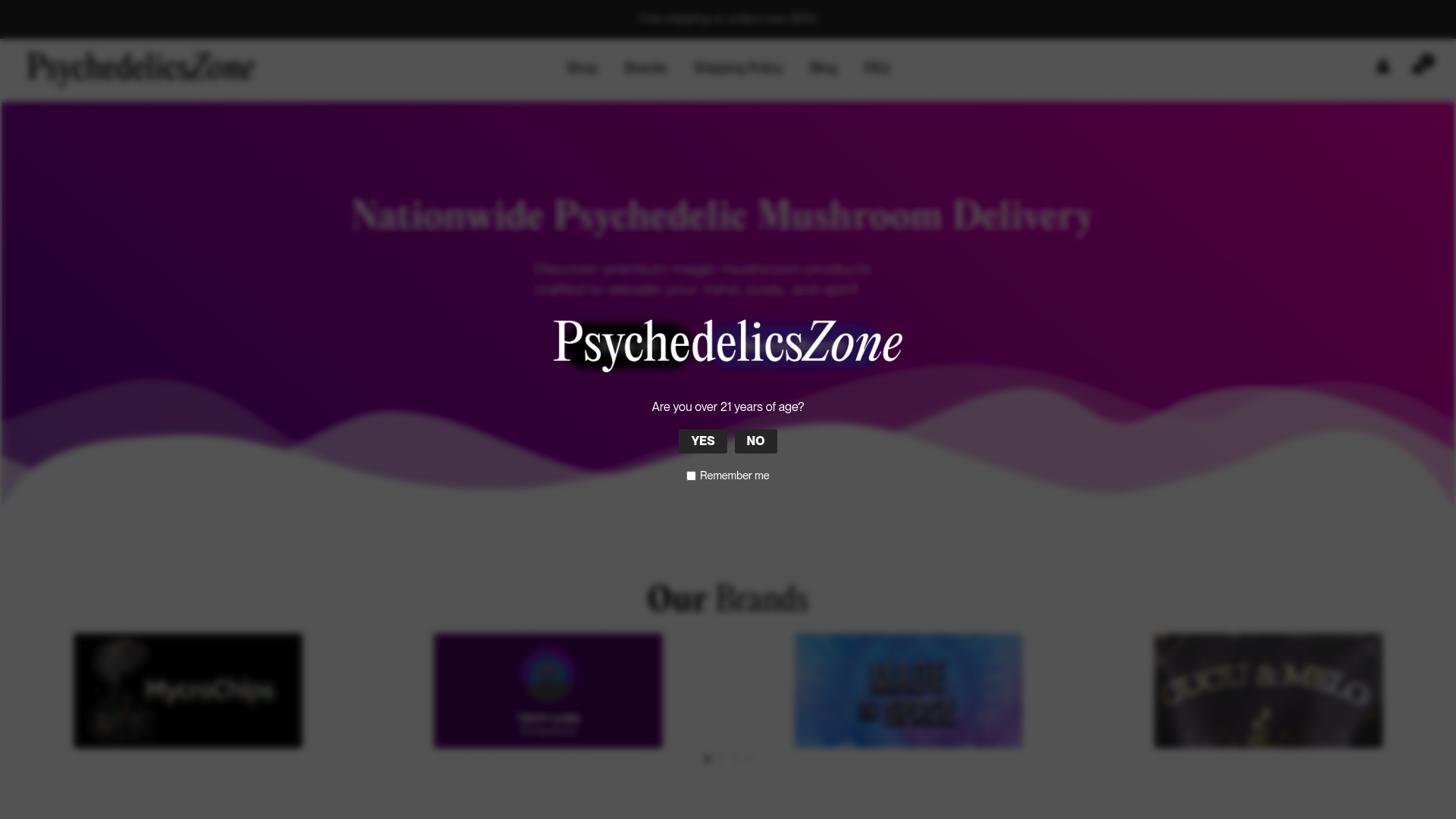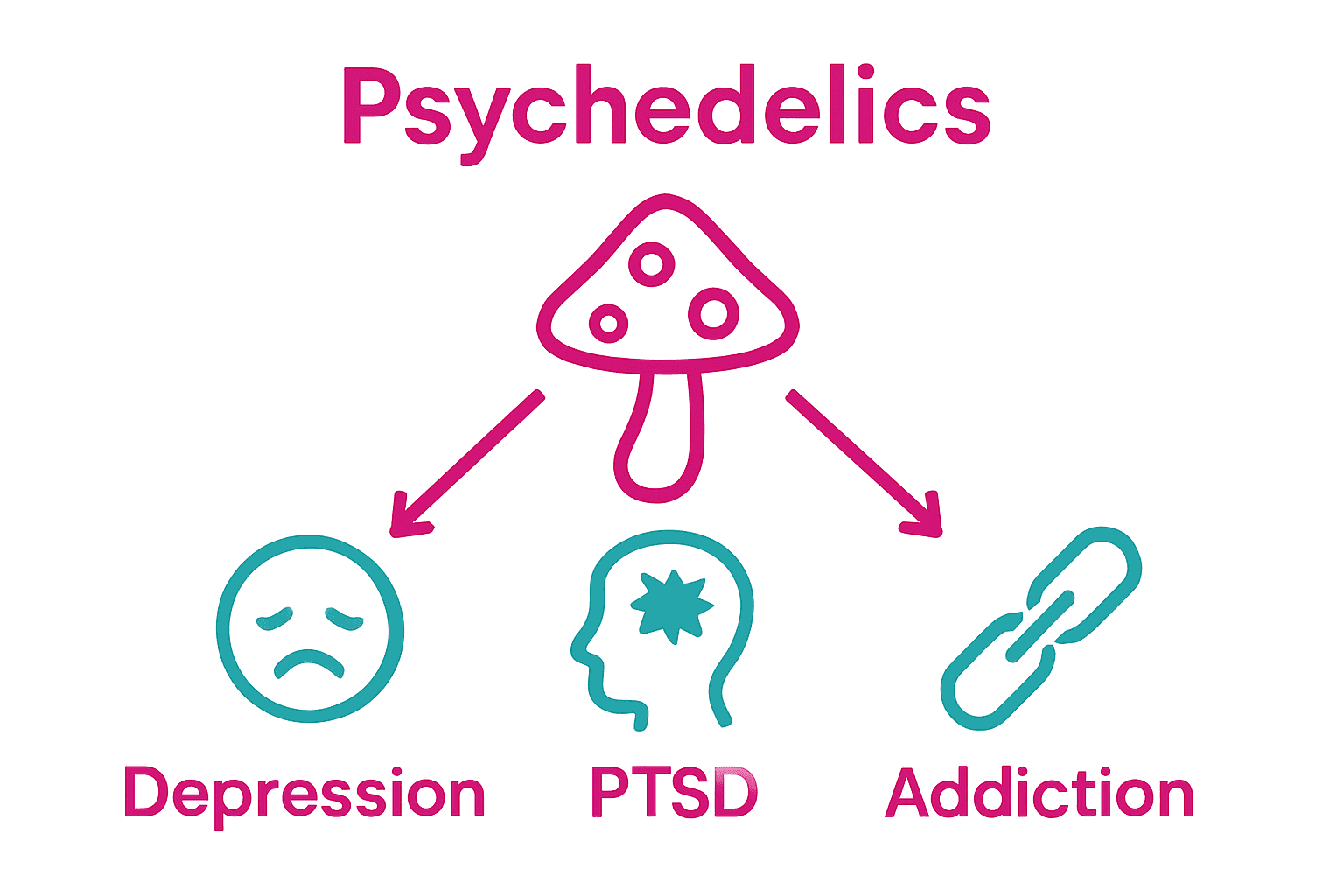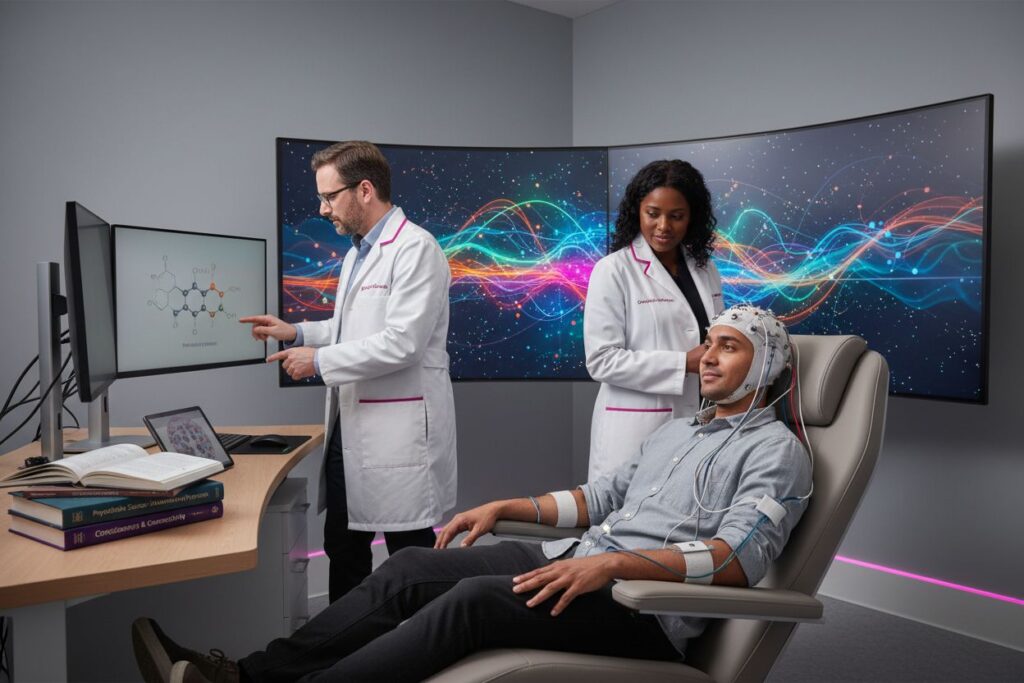Over 25 million people in the United States have tried psychedelics at least once, reflecting a growing curiosity about these mysterious substances. Interest is rising as studies reveal their impact on brain chemistry, consciousness, and even mental health treatment. Understanding how psychedelics work can shed light on why they cause such vivid changes in perception and offer new possibilities for emotional healing and self-discovery.
Key Takeaways
| Point | Details |
|---|---|
| Psychedelics Mechanism | Psychedelics alter perception and cognition by interacting with serotonin receptors, especially 5-HT2A, leading to unique neural connectivity and brain communication patterns. |
| Classifications | Psychedelics can be divided into three main categories: tryptamines (e.g., psilocybin), phenethylamines (e.g., mescaline), and ergolines (e.g., LSD), each with distinct effects and potency levels. |
| Neurobiological Transformation | Psychedelics promote neuroplasticity, potentially leading to long-term beneficial changes in brain function, which may aid in treating mental health conditions. |
| Regulatory Landscape | The legal status of psychedelics is evolving, with some jurisdictions decriminalizing or legally supervising their therapeutic use, necessitating a thorough understanding of local laws and safety protocols. |
Table of Contents
- What Are Psychedelics And How They Work
- Types Of Psychedelics And Key Differences
- Neurobiological Effects On Brain Function
- Therapeutic Benefits And Medical Research
- Risks, Safety, And Legal Considerations
What Are Psychedelics and How They Work
Psychedelics are powerful psychoactive substances that dramatically alter perception, cognition, and consciousness by interacting with neurotransmitter systems in the brain, particularly serotonin receptors. These substances – including compounds like psilocybin, LSD, and DMT – create profound neurological experiences by temporarily disrupting typical brain communication patterns and creating unique neural connections.
At the neurochemical level, psychedelics bind to specific serotonin receptors, most notably the 5-HT2A receptor, which triggers cascading changes in brain activity. This interaction causes neurons to communicate in unconventional ways, breaking down the brain’s standard default mode network and enabling novel thought processes. Essentially, psychedelics temporarily rewire brain connectivity, allowing individuals to experience reality through a dramatically different perceptual lens.
The mechanisms of psychedelic experiences involve complex neurological interactions that can be categorized into several key processes:
- Receptor Binding: Direct interaction with serotonin receptors
- Neural Plasticity: Increased brain connectivity and flexibility
- Default Mode Network Disruption: Reduced brain region communication patterns
- Increased Neurological Communication: Enhanced cross-hemisphere brain interactions
Learn more about the science behind psychedelics in our guide on psilocybin research.
Types of Psychedelics and Key Differences
Psychedelics represent a diverse family of compounds that profoundly alter human consciousness, with each type offering unique neurochemical interactions and experiential characteristics. The primary categories include tryptamines (like psilocybin and DMT), phenethylamines (such as mescaline), and ergolines (like LSD), each distinguished by their molecular structure and specific neurological effects.
According to research, potency varies dramatically between different psychedelic compounds. A comparative analysis reveals significant differences in receptor interactions, with substances exhibiting markedly different strengths. For instance, mescaline represents a low-potency psychedelic requiring hundreds of milligrams for activation, while psilocybin is approximately 20 times more potent, and LSD stands at roughly 2,000 times more potent than mescaline.
The key psychedelic categories can be broken down as follows:
Tryptamines: Psilocybin, DMT
- Typically shorter-acting
- Strong introspective experiences
- Moderate visual alterations
Phenethylamines: Mescaline, 2C-B
- Longer duration experiences
- More sensory and perceptual shifts
- Often associated with more physical sensations
Ergolines: LSD
- Longest-acting psychedelic
- Profound consciousness alterations
- Extensive neural network disruption
Understanding these nuanced differences helps individuals approach psychedelic experiences with greater awareness and intentionality.

Here’s a comparison of the main psychedelic categories and their key characteristics:
| Category | Main Examples | Duration | Primary Effects |
|---|---|---|---|
| Tryptamines | Psilocybin DMT | Short to medium | Introspective Moderate visuals |
| Phenethylamines | Mescaline 2C-B | Long | Sensory shifts Physical sensations |
| Ergolines | LSD | Longest | Profound alterations Network disruption |
Neurobiological Effects on Brain Function
Brain connectivity undergoes remarkable transformations during psychedelic experiences, fundamentally altering how neural networks communicate and process information. According to research from the National Institutes of Health, psilocybin administration dramatically disrupts functional connectivity across the brain, particularly targeting the default mode network and creating unprecedented patterns of neural communication.
Neuroplasticity emerges as a critical mechanism underlying psychedelic effects. Exploring the neurological insights from recent psilocybin research reveals profound molecular and cellular changes. Clinical studies indicate psychedelics trigger rapid neuroplastic responses, including:
- Gene Expression Modifications: Increased activation of plasticity-related genes
- Dendritic Complexity: Enhanced neuronal branching and connectivity
- Neurogenesis: Generation of new neural connections
- Synaptic Adaptations: Long-lasting changes in neural communication pathways
The neurobiological impact extends beyond immediate experience. Research suggests that these connectivity disruptions can persist for weeks, potentially resetting entrenched neural patterns associated with conditions like depression, anxiety, and addiction. By temporarily dissolving standard brain communication networks, psychedelics create a unique window of neurological flexibility, allowing for potentially transformative cognitive and emotional recalibration.
Therapeutic Benefits and Medical Research
Psychedelic research has experienced a remarkable renaissance in recent years, with clinical investigations revealing transformative potential for treating complex mental health conditions. Since 2017, scientific interest has surged, exploring the therapeutic applications of compounds like psilocybin, MDMA, and ketamine for addressing challenging psychological disorders that traditional treatments have struggled to resolve.
Examining the emerging role of psychedelics in medical treatment highlights groundbreaking therapeutic possibilities. Current research demonstrates promising outcomes across multiple critical domains:
- Treatment-Resistant Depression: Potential for rapid and sustained mood improvements
- Post-Traumatic Stress Disorder (PTSD): Accelerated trauma processing and emotional healing
- Substance Use Disorders: Breakthrough interventions for addiction recovery
- Neurodegenerative Diseases: Potential neuroplasticity and cognitive restoration mechanisms
The medical research landscape suggests psychedelics offer more than symptomatic relief—they potentially represent a paradigm shift in understanding mental health treatment. By facilitating profound neurological reset and emotional processing, these compounds are challenging traditional pharmaceutical approaches, offering hope for individuals struggling with complex psychological conditions that have historically been difficult to treat effectively.
Risks, Safety, and Legal Considerations
Legal complexity surrounds psychedelic substances, with a landscape that varies dramatically between jurisdictions and different compounds. While most classic psychedelics remain classified as Schedule I substances at the federal level, recent years have witnessed significant regional shifts, particularly for therapeutic applications.
Understanding the nuanced legal landscape of psychedelic substances reveals an evolving regulatory environment. Several U.S. jurisdictions have taken progressive steps in decriminalization and controlled therapeutic use:
- Federal Status: Most psychedelics remain Schedule I substances
- Decriminalized Locations: Denver, Oakland, Santa Cruz, Washington D.C.
- Therapeutic Legalization: Oregon (supervised therapeutic use)
- Medical Programs: Colorado (medical-assisted use licenses), New Mexico (therapeutic psilocybin program)
Safety remains paramount in psychedelic experiences. Therapeutic research emphasizes the critical importance of professional supervision, controlled environments, and comprehensive screening. Potential risks include psychological distress, exacerbation of underlying mental health conditions, and rare but serious adverse reactions. Individuals with personal or family histories of psychotic disorders, bipolar disorder, or schizophrenia are typically advised against psychedelic use. Responsible engagement requires thorough medical consultation, carefully managed dosages, and supportive, controlled settings to minimize potential negative outcomes.
Ready to Experience the Power of Psychedelics for Yourself?
Curious about how psychedelics like psilocybin actually transform your brain and open the doors to new perceptions? If you are eager to move beyond theory and discover these effects in a safe, convenient, and satisfying way, you are not alone. Many people want to access genuine, high-quality mushroom products but worry about trusted sources, consistent potency, or privacy during purchase and delivery.
Tap into the same transformative neuroplasticity and consciousness expansion discussed in our article by exploring our Psychedelics product collection. Every product meets strict quality standards and offers versatility for your unique goals, from microdosing to creative exploration.

Start your personalized journey of self-discovery today and enjoy the peace of mind of discreet shipping, fast service, and lab-tested items. Browse psilocybin capsules and edibles now, or head directly to our main website for the full range. Experience the difference that professional support and curated selections make. Take your first step while these premium options are available.
Frequently Asked Questions
What are psychedelics and how do they work?
Psychedelics are powerful psychoactive substances that alter perception, cognition, and consciousness by interacting with neurotransmitter systems in the brain, especially serotonin receptors. They bind to specific serotonin receptors and disrupt normal brain communication, leading to unique neurological experiences.
What are the main types of psychedelics and their key differences?
The primary categories of psychedelics include tryptamines (e.g., psilocybin, DMT), phenethylamines (e.g., mescaline), and ergolines (e.g., LSD). They differ in potency, duration, and effects. For example, tryptamines tend to produce shorter, more introspective experiences, while ergolines like LSD offer longer-lasting effects with profound alterations in consciousness.
How do psychedelics affect brain function?
Psychedelics cause notable changes in brain connectivity, particularly disrupting the default mode network. This leads to enhanced neural communication, increased neural plasticity, and lasting effects on brain function, which may benefit conditions like depression and anxiety.
What are the therapeutic benefits of psychedelics?
Recent research highlights the potential of psychedelics in treating mental health conditions such as treatment-resistant depression, PTSD, and substance use disorders. They may induce rapid mood improvements and facilitate emotional healing, representing a significant shift in approaches to mental health treatment.

